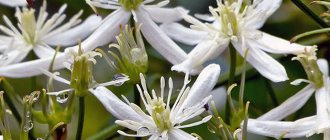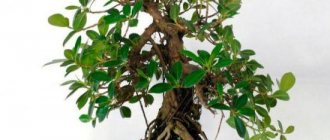Description of clematis Luther Burbank
Clematis Luther Burbank is very valuable due to its versatility. With its help you can easily turn an ordinary wall, balcony, summer gazebo into a real work of art.
You can evaluate Clematis Luther Burbank by photo and description:
Used in landscape design for vertical and horizontal landscaping of various objects.
Perennial deciduous plant.
Up to 5 m (under the right growing conditions).
Activity of formation of new shoots (force of growth of new stems)
From June to September.
The diameter of each flower is approximately 17 - 20 cm.
Color – from pale lilac to deep purple; stamens – cream or yellowish; structure – velvety; under the influence of sunlight, the color becomes more faded, and as the ambient temperature decreases, it becomes brighter and more saturated; the anthers are large and often have a yellow tint.
High (without shelter it can withstand frost down to -30 ° C).
Resistance to diseases and pests
High degree of resistance to most lesions.
Planting Clematis Luther Burbank
When planting clematis of the Luther Burbank variety, you need to familiarize yourself with the basic rules that will create the most favorable conditions for growing:
- When planting, it is recommended to give preference to a sunny place, since the shoots of this plant prefer warmth, and if it is insufficient, the vine will grow much more slowly and produce fewer shoots and flowers;
- In addition, you need to remember that clematis roots prefer to remain in the shade. To achieve this effect, you can plant annual flowers or perennial crops with a small root system at the base of the plant. Thanks to this technique, the roots of clematis Luther Burbank will always be protected from the effects of solar heat;
- Clematis variety Luther Burbank does not like strong winds, as it prevents it from clinging with its thin tendrils to a support located in the immediate vicinity. This fact must be taken into account when choosing a seat for the vine.
Landing dates
When choosing Luther Burbank clematis suitable for planting, your preference should be given to the following representatives:
- it is preferable if the new seedling has a closed root system, that is, grows in a special container;
- the optimal age for transplanting into open ground is over 2 years;
- The seedling should have a lignified trunk at the base.
The timing of transplanting clematis Luther Burbank is not strictly regulated, and this procedure can be carried out at any time during the entire warm season.
Preparing the landing site and soil
Before you begin directly planting clematis of the Luther Burbank variety in open ground, you need to be very careful about deciding where this vine will grow.
This variety of clematis can be planted in partial shade only in the southern regions, where there is a consistently high temperature of the environment and soil (the plant may wither from this).
In order to protect the vine from all kinds of fungal diseases, before planting the plant directly in the soil, you need to treat it and clear it of all kinds of weeds and debris.
Clematis Luther Burbank prefers neutral soils, so soil with an acidic environment must be alkalized, and sandy areas must be improved by adding organic matter or clay before planting.
Read also: DIY crafts for the household
Preparation of planting material
Preparing clematis Luther Burbank for planting involves performing the following steps:
- in order for the roots of the vine to be saturated with water, before starting the planting procedure, you need to place the container with the plant in a container with water for approximately 40 minutes;
- the lump of earth that is present on the roots of the vine does not need to be destroyed when planting;
- for disinfection purposes, the root system of the vine is treated with a fungicide;
- To ensure better rooting conditions, clematis can be sprayed with Epin solution.
How to plant correctly
In order to properly transplant clematis Luther Burbank into open ground, you need to perform the following algorithm of actions:
- Prepare the planting hole. It should be quite spacious, since over the entire period of its life (and with proper care it can last about 20 years), the vine acquires a very massive root system. The dimensions of the prepared pit should be approximately 60 cm in all respects;
- At the bottom of the dug hole, you need to place a special nutrient mixture consisting of the following components: 3 buckets of compost + bucket of peat + bucket of sand + 2 liters of ash + 3 handfuls of superphosphate + 3 handfuls of bone meal + handful of complex fertilizer. The resulting mixture must be thoroughly mixed right in this recess and 2 buckets of water added there. The pit and all its contents should be left in this form for approximately 24 hours;
- After the required time, you can begin planting. If you take a seedling with an open root system, then when planting it is necessary to carefully straighten its roots. If the seedling has a closed root system (which is the more preferable option), then it must be placed for 40 minutes. into the water and only then begin planting;
- The plant must be covered with soil, leaving a distance of about 10 cm to the top of the hole. Gradually, as the plant grows, soil should be added to the vine until it is level with the ground;
Choosing a place to plant clematis
I want to warn you right away that not one clematis will grow anywhere. This crop has quite strict requirements for habitat and soil substrate.
Clematis cannot be grown in areas with close groundwater, in places flooded by melt water and rainfall. They cannot simply be shoved into the ground unless it has been worked to a sufficient depth, for example in a former vegetable garden or in my uprooted apple tree. In all other cases, the soil is carefully prepared.
These are mostly light-loving plants, which must be taken into account when choosing a bridge for planting them. In light partial shade, only clematis from the Viticella group feel good.
Although in the southern regions these vines must be shaded: there, in full sun, they suffer from the heat, fade and quickly fade.
Clematis will not grow “in the seven winds.” Strong gusts break and frighten away fragile young shoots, so the planting site should be protected from the prevailing winds by buildings or dense plantings.
If you plan to plant clematis near the house, you should not place it on the south side of the building: there it will suffer from the sun.
For wall decoration, it will be better if you prefer east or west wall. But even here you need to be careful: the clematis should not be dripping from the roof. When trying to decorate an unsightly iron fence, do not try to grow these vines next to it. They will suffocate from the heat, bloom poorly, and sooner or later they will inevitably die.
Caring for clematis varieties Luther Burbank
If all necessary procedures for planting and caring for clematis Luther Burbank are correctly followed, it will decorate any space for many years.
Growing conditions
Favorable conditions for the growth of clematis Luther Burbank imply the implementation of a number of activities:
- a responsible approach to choosing a place to plant vines;
- proper planting of plants in open ground;
- timely watering;
- correct pruning;
- prevention against parasitic organisms;
- application of fertilizers and fertilizing;
- proper preparation of the plant for the cold season.
Watering mode
Clematis Luther Burbank requires fairly frequent and abundant watering. A few basic rules should be taken into account:
- the soil in the place where the vine grows should not be too dry, but also too wet;
- to water a mature specimen, it is necessary to use about 40 liters of water at a time; for young plants, this norm can be reduced by 2 times;
- Watering should be carried out not at the root, but around the center, retreating approximately 25 - 40 cm.
Fertilizing
Clematis Luther Burbank is fertilized mainly by alternating organic and mineral fertilizers. This must be done individually for each clematis, depending on the structure of the soil where it grows, as well as the general condition of the plant.
Mulching and loosening
Loosening the soil near clematis Luther Burbank is usually carried out only once per season, in the spring. At the same time as loosening, all weeds must be removed. In the future, this procedure should be abandoned, since the process can very easily damage the root system of the vine. In the future, loosening is always replaced by mulching.
Tying up
Clematis Luther Burbank, if properly cared for, can reach a length of 5 m. Naturally, with such a size, it needs additional support, which is provided by tying the vine to a support located in the immediate vicinity.
Trimming and shaping
As clematis Luther Burbank grows, it is imperative to free it from old and weak branches, as well as give it the necessary shape and direction of growth.
Preparing for winter
Despite the fact that clematis Luther Burbank is very resistant to winter cold, it still needs to be helped to survive this cool time, and for this it is necessary to properly prepare the vine for winter:
- the plant should be trimmed level with the ground;
- clear the space under the clematis from remnants of vegetation and fallen leaves;
- cover the roots with the following composition: peat + manure;
- roll long shoots into rings and press them to the ground with material that does not rot;
- Place spruce branches on top of the plant and cover everything with waterproof material.
Read also: Recipe for canning butter for the winter
In spring, clematis should be opened gradually so as not to expose it to the harmful effects of suddenly returning frosts. As a rule, this needs to be done when perennial plants planted nearby begin to bloom.
Growing and caring for clematis in Siberia
Flower propagation
- layering - for this purpose, shoots of vines are rooted close to the mother bush;
- by cuttings - young shoots are separated from the plant during the period of their intensive growth, rooted and planted in the ground the next year;
- by dividing a bush - you can divide large, strongly overgrown bushes from 4 years old and older; to do this, they are cut into several parts along with the rhizome and immediately planted back into the soil.
Choosing a variety for planting
The first group is varieties in which flowering occurs on last year’s shoots. They are not grown in Siberia because the shoots need to be pruned for the winter. The second group is plants in which flowers can appear on both last year’s shoots and young shoots. They are suitable for breeding in Siberia, but require periodic pruning. The third group is herbaceous varieties in which flowering occurs on young shoots. By winter, the green part dies off, and the rhizome remains in the ground. They can be grown in Siberia, but must be protected from frost.
Features of planting clematis
To plant clematis in the ground, you need to follow several steps:
- dig a hole (60 cm deep and wide), lay drainage on its bottom;
- prepare a special soil mixture, which will consist of soil, dolomite flour and lime;
- place the seedling in the planting hole, cover its rhizome with the mixture and cover with sand;
- organize support for young shoots.
Clematis prefer to grow in light, nutritious soils with low groundwater levels. The area should be well lit and protected from the wind. It is best to plant plants from the southern part of the house - this way the wall will serve as a shelter.
Plant care
- watering;
- pruning;
- construction of a support;
- fertilization;
- shelter for the winter.
Different varieties of clematis need abundant watering. They need moisture to grow green mass and form flowers. On average, in the summer, one watering per week is enough for them, but you need to make sure that water does not stagnate in the area. Moisture should permeate the deep layers of soil and reach the rhizome.
The soil in the flowerbed should be periodically loosened and cleared of weeds. It is also useful to apply ready-made mineral fertilizers. You can choose a complex mixture or use nitrogen, potassium and phosphorus fertilizers separately. It is also useful to organize support for each flower according to its sulfur of growth. This way the vines will not be damaged by the wind and their own weight.
Reviews of clematis Luther Burbank
For quite a long time, many gardeners have believed that clematis is an exotic plant. Most people mistakenly assume that almost all species, including clematis Luther Burbank, are distinguished by a capricious disposition, but this judgment is erroneous. Even a beginner in this matter can acquire a beautiful liana in his own garden. Thanks to a wide range of products, everyone can choose the right clematis variety.
Description of clematis Luther Burbank
Clematis variety Luther Burbank is classified as a monochromatic species; as a rule, it is a classic that will never go out of style. With the help of this plant you can decorate not only flower beds, but also a gazebo, terrace, and balcony. Flowering is abundant and lasts for a long time. The advantage is the fact that the plant is practically not susceptible to diseases.
Judging by the photo, clematis Luther Burbank is a vigorous shrubby vine that can reach a height of 2.5 to 4 m, in some cases even up to 5 m. The shoots have a red-brown tint. As a rule, up to 10 shoots appear on each bush.
The leaf blade is quite complex, consisting of 3-5 leaves. The flowers open wide and are large in size. For example, the diameter of flowers can vary from 16 to 20 cm. There are only 6 sepals, they have a pointed ellipsoidal shape, with wavy edges. The color is purple-violet, which fades in summer, and becomes bright at low temperatures.
The anthers are quite large and can be yellow or light yellow. The flowering period lasts from June to September. From 9 to 12 flowers appear on each shoot.
A distinctive feature of clematis variety Luther Burbank is the fact that it is able to tolerate low temperatures down to -30°C. In addition, the plant is easy to care for and does not require drainage. Cultivation can be done both on fertile lands and on ordinary soil. Clematis grows well in sunny and shaded areas and loves regular watering.
From earth to sky
The arrangement of flowers is no less important. In clematis they can be distributed almost throughout the entire vine (from the 3rd–4th node). Then we freeze with delight, saying that the plant is in bloom from top to bottom. This is different from Ashwa, Barbara Harrington, Venosa Violacea, Tentel.
In a fairly significant part of the varieties, many flowers are located over a significant area of the vine (for example, from the 5th–7th node to the very top).
These are Hegley Hybrid, Comtesse de Boucho, Huldin, Zhakmani, Cosmic Melody, Gypsy Queen. There are varieties that bloom profusely and beautifully, with a whole cap, but only at the very top: Blue Flame, John Paul II, Ernst Markham.
Luther Burbank Clematis Pruning Team
When choosing planting material, it is recommended to pay attention not only to the attractive appearance, level of frost resistance and other characteristics, but also to the pruning group. Clematis Luther Burbank belongs to pruning group 3. As practice shows, plants of this group are excellent for growing in the central part of Russia. It is important to understand that with this group the plant must be trimmed completely.
Thanks to this procedure, more and more young shoots will appear on the vine every year, and the root system will develop significantly. In the year of planting, it is recommended to prune the bush completely, which will allow it to take root much better. Pruning is done in mid-autumn, before the first frost.
Planting and caring for clematis Luther Burbank
If you decide to plant clematis of the Luther Burbank variety, then special importance must be given to choosing a suitable location. Despite the fact that the liana can grow well in the shade, it is still a light-loving plant.
If there is not enough light, growth will be slow, as will development in general. Planting the crop in partial shade is only allowed in the southern regions, as the vines begin to suffer from constant overheating of the soil. When planting in groups, it is recommended to maintain a distance of at least 0.5 m.
Read also: Succulents in the house photos with names
During growth, watering must be plentiful. In addition, it is important to understand that excessive waterlogging of the soil at any time of the year is dangerous for plants. It is recommended to prepare the land for planting in advance. Clematis can grow in one place for 20 years.
The most unpretentious varieties of clematis with photos and descriptions
Clematis - varieties for the Moscow region and Siberia photo Various types of clematis have long conquered the hearts of Russian flower growers. This “Western” flower blooms profusely and luxuriantly, but at the same time is highly sensitive to temperature changes and demanding care.
Growing a lush liana and achieving long flowering is not always possible even for experienced gardeners; the main mistake is the wrong choice of clematis variety, which is not suitable for certain climatic conditions. The weather conditions of Russia vary too much throughout its territory, so when planting it is necessary to focus on proven varieties that are resistant to frost and temperature changes and are undemanding to care.
The best varieties of clematis for the Moscow region
When choosing beautifully flowering plants for your suburban area, you should pay attention not only to the bright coloring and splendor of flowering, but also to the ability to withstand the climatic conditions of the Moscow region. In the section you will find suitable varieties of clematis, photos with names, and general characteristics of flowering vines.
Ballerina (lat. Balerina)
One of the longest-blooming clematis, the vine blooms from May to September. White clematis, variety Ballerina, is a real find for gardeners who prefer vines with large flowers, up to 15 cm.
Flowering occurs on young annual shoots with single but frequent flowers. The height of the vine reaches three meters.
Variety Nadezhda (lat. Nadezhda)
A Soviet variety with light burgundy flowers of large size, reaching 14 cm. The petals have a pointed shape, so the open flowers resemble stars and are clearly visible.
The height of the vine reaches 2.5-3 meters. The flowering of the plant begins in May and ends in early June, then in mid-summer the clematis variety Nadezhda blooms again.
Nikolay Rubtsov (lat. Nikolaj Rubtzov)
The variety is distinguished by lilac flowers, on the petals of which the contour is repeated with streaks of the same color. The height of the plant does not exceed 2.5 meters, the flowers are large, up to 17 cm in diameter. Clematis varieties Nikolay Rubtsov bloom from May until the end of summer, continuously replacing one flower with another.
Clematis Ville de Lyon (lat. Ville de Lyon)
One of the brightest clematis, the flowers of which are painted in a rich red color with a fuchsia tint. The petals are ovoid and unevenly colored, giving the flowers an exotic tropical plant look.
The height of the vine reaches three meters. It blooms from the end of May and all summer on the shoots of the current year.
Clematis varieties for Siberia
In the harsh climate of Siberia, preference should be given to those varieties of clematis in which flowering occurs on overwintered shoots.
This is a fairly large group of varieties, among which you can choose plants in any color scheme. There are also varieties that bloom on the shoots of the current season, suitable for the conditions of northeast Russia.
Such clematis, varieties with photos and descriptions are given below in our article.
Variety Anastasia Anisimova (lat. Anastasija Anisimova)
Soviet variety, tested for almost half a century. Pale, heavenly, medium-sized flowers with a diameter of 10-14 cm adorn a low vine, up to 2 meters.
Flowering from July to October, abundant and constant. Suitable for landscaping balconies and growing in flowerpots.
Clematis Luther Burbank (lat. Luther Burbank)
An old variety of Soviet selection with large dark purple flowers, ranging in size from 15 to 25 cm. The height of the vine reaches 2.5 meters, flowering begins in July and ends at the end of October.
Clematis variety Luther Burbank is very resistant to frost and disease. For the winter, it is recommended to cut off all shoots at the root. One of the most common varieties of clematis in Russia.
Clematis variety Miss Beymen (lat. Miss Bateman)
A representative of the clematis group, it is white in color with silky petals. The height of the vine is up to 2.5 meters. Flowers appear on last year's shoots in mid-June. This year's growth blooms later, but the flowers do not fall off until frost.
The flowers are 10-15 cm in diameter, clearly visible against the dense greenery of the plant. Shoots should not be cut before sheltering for the winter.
Comtesse de Bouchaud (lat. Comtesse de bouchaud)
One of the most popular pink varieties. Small flowers, 10-15 cm in diameter, adorn a vine 2-2.5 meters high. The sepals are slightly wavy at the edges, slightly raised, which makes the flower very graceful.
Flowering from June to August or September. The variety has increased resistance to frost.
Planting and caring for clematis Luther Burbank
If you decide to plant clematis of the Luther Burbank variety, then special importance must be given to choosing a suitable location. Despite the fact that the liana can grow well in the shade, it is still a light-loving plant.
If there is not enough light, growth will be slow, as will development in general. Planting the crop in partial shade is only allowed in the southern regions, as the vines begin to suffer from constant overheating of the soil. When planting in groups, it is recommended to maintain a distance of at least 0.5 m.
During growth, watering must be plentiful. In addition, it is important to understand that excessive waterlogging of the soil at any time of the year is dangerous for plants. It is recommended to prepare the land for planting in advance. Clematis can grow in one place for 20 years.
Advice! Since vines can grow up to 5 m in height, it is recommended to take care of the support system in advance.
Judging by the photo and description, clematis Luther Burbank can be propagated in several ways:
- by dividing the bush - in this case, an adult liana, the age of which is 5 years or older, is perfect. Using a sharp cutting object, the root system of the bush is divided into parts, after which each is rooted;
- layering - in the spring, it is necessary to press the shoots to the ground and fix them using staples. After a year, such cuttings can be separated from the mother bush;
- cuttings are the most popular method used for large-scale propagation of clematis.
If necessary, you can propagate plants at home yourself.
Reproduction
Judging by the photo and description, clematis Luther Burbank can be propagated in several ways:
- by dividing the bush - in this case, an adult liana, the age of which is 5 years or older, is perfect. Using a sharp cutting object, the root system of the bush is divided into parts, after which each is rooted;
- layering - in the spring, it is necessary to press the shoots to the ground and fix them using staples. After a year, such cuttings can be separated from the mother bush;
- cuttings are the most popular method used for large-scale propagation of clematis.
If necessary, you can propagate plants at home yourself.
Diseases and pests
All varieties of clematis have a high level of resistance to disease, but they can also be attacked by pests. Most often, leaf plates and the root system are subject to attack - nematodes appear. If these pests are found, it is not recommended to plant vines in this place.
When a spider mite appears, you can notice how the color of the leaves changes to a yellow tint, cobwebs appear on them, and the buds dry out. Beet aphids suck all the nutrients from the leaves. In this case, it is necessary to treat the plant with insecticides.
In the fight against parasites, it is recommended to use garlic infusion. To do this, add 200 g of garlic to 10 liters of water.
Diseases and pests
As we said a little earlier, clematis Luther Burbank is practically not susceptible to any diseases, but it can be attacked by various pests. The root system and leaves are the first to be attacked - nematodes appear. If you notice the appearance of these insects, then you do not need to plant the plant in that place.
If the plant is attacked by a spider mite, you will notice that the leaves have turned yellow, you can see the appearance of cobwebs, and the buds begin to dry out. Beet aphids are capable of sucking out all the nutrients from the plant. in this case, insecticides must be used to control pests. You can also use garlic infusion. To do this, add garlic (200 g) to 10 liters of water.
Clematis Luther Burbank is classified as pruning group 3. For this reason, every water you will need to trim excess shoots that interfere with the normal development of the plant. Also, do not forget to inspect the plants to remove dry and damaged shoots. Believe me, this will not take a lot of your time and effort, but it will make your vine the most beautiful, and clematis Luther Burbank will repay you for this with long and abundant flowering.











